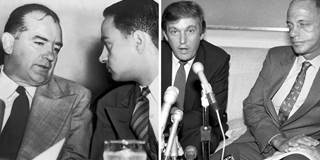Russia’s interference in American and European elections constitutes a serious offense. But by treating Russian President Vladimir Putin and his cronies as an existential threat, Western leaders are playing directly into the Kremlin’s hands, and validating its false narrative about Russia’s place in the world.
MOSCOW/LONDON – The United States experienced its first “Red Scare” immediately after World War I. For three years, Russians were said to be inciting worker revolts and strikes as part of an orchestrated campaign to undermine American capitalism. Then, on April 29, 1920, US Attorney General A. Mitchell Palmer warned that two days hence, on May Day, American workers would rise up to topple the US government by force. It didn’t happen, and the Red Scare vanished almost as quickly as it had appeared.

MOSCOW/LONDON – The United States experienced its first “Red Scare” immediately after World War I. For three years, Russians were said to be inciting worker revolts and strikes as part of an orchestrated campaign to undermine American capitalism. Then, on April 29, 1920, US Attorney General A. Mitchell Palmer warned that two days hence, on May Day, American workers would rise up to topple the US government by force. It didn’t happen, and the Red Scare vanished almost as quickly as it had appeared.